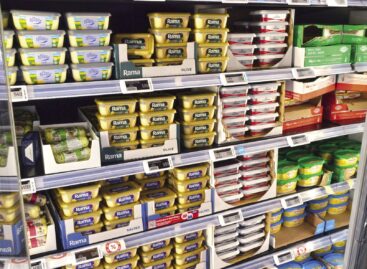
There are many current topics that this article could cover, but perhaps one of the most exciting is the profit margin cap, which didn’t end at the end of May – what is more, it was extended to include cosmetics and chemical products, and according to the Prime Minister’s announcement, new product groups may also be included. The next deadline is the end of August, which means the measure will last for “only” 2.5 more months. Or will it?
This article is available for reading in Trade magazin 2025/6-7.
Currently, the 10% profit margin cap remains in place for designated food products, while for cosmetics, chemicals and household paper products the rate is 15% (we are talking about more than 30,000 products). Held at the end of May, the exclusive discussions at our Business Meetup&Dinner event covered a wide range of topics, which we will report on in more detail in our September issue, but the profit margin cap was a recurring theme in the analyses of several of our invited guests. It was noted that based on the data available, this measure hasn’t only failed to curb the inflation, but actually made it keep rising; unfortunately, concealing real inflation with such measures always backfires with greater force in the end; this is exactly why its phasing out isn’t good tactics, as it further reinforces the inflationary effect and perception; although the introduction affects large chains in both the food and drugstore sectors, it has a negative influence on small businesses too, which are unable to lower their prices, thus further reducing shopper willingness to buy, meaning their revenues will decline further, and as many as one in five small shops in small towns may decide to close, which will increase the number of towns without shops (currently standing at 400); it will reignite old conflicts between retailers and suppliers, as the principle of burden sharing is experienced differently by different parties; with prices published with maximum profit margins, the pricing strategy of individual chains has become partially transparent, which may also cause a competitive disadvantage in the longer term; for many of the large chains, the negative results are increasing month by month, as the maximum margin set isn’t able to cover their costs…
Here I would like to mention another event, which also took place in May, but focused on innovation: our Innovation Day conference and award ceremony, which is held at the beginning of the month each year. How are these two things connected? It is simple: if there is no profit, there is no innovation and no investment. Yet we know that innovation is a driving force in the economy, in every field. But when purchases stall because consumers feel financially insecure and can only spend on the bare necessities – and even then only in promotional periods – the boomerang effect kicks, in because there is no openness to innovation. Currently, two-thirds of consumers are saving money and don’t believe their situation will improve in the next 12 months. In such circumstances anyone who wants to invest in the future has a very difficult task ahead of them.
Related news
The forint may remain relatively strong, even permanently
🎧 Hallgasd a cikket: Lejátszás Szünet Folytatás Leállítás Nyelv: Auto…
Read more >Turmoil in the tubs
🎧 Hallgasd a cikket: Lejátszás Szünet Folytatás Leállítás Nyelv: Auto…
Read more >Margin reduction extended to new products – in-store price restrictions remain in place until the end of February
🎧 Hallgasd a cikket: Lejátszás Szünet Folytatás Leállítás Nyelv: Auto…
Read more >Related news
SPAR FREE FROM coconut biscuits recalled due to possible presence of foreign material
🎧 Hallgasd a cikket: Lejátszás Szünet Folytatás Leállítás Nyelv: Auto…
Read more >(HU) A nap mondása
🎧 Hallgasd a cikket: Lejátszás Szünet Folytatás Leállítás Nyelv: Auto…
Read more >Ipsos Cost of Living Monitor 2025
🎧 Hallgasd a cikket: Lejátszás Szünet Folytatás Leállítás Nyelv: Auto…
Read more >







